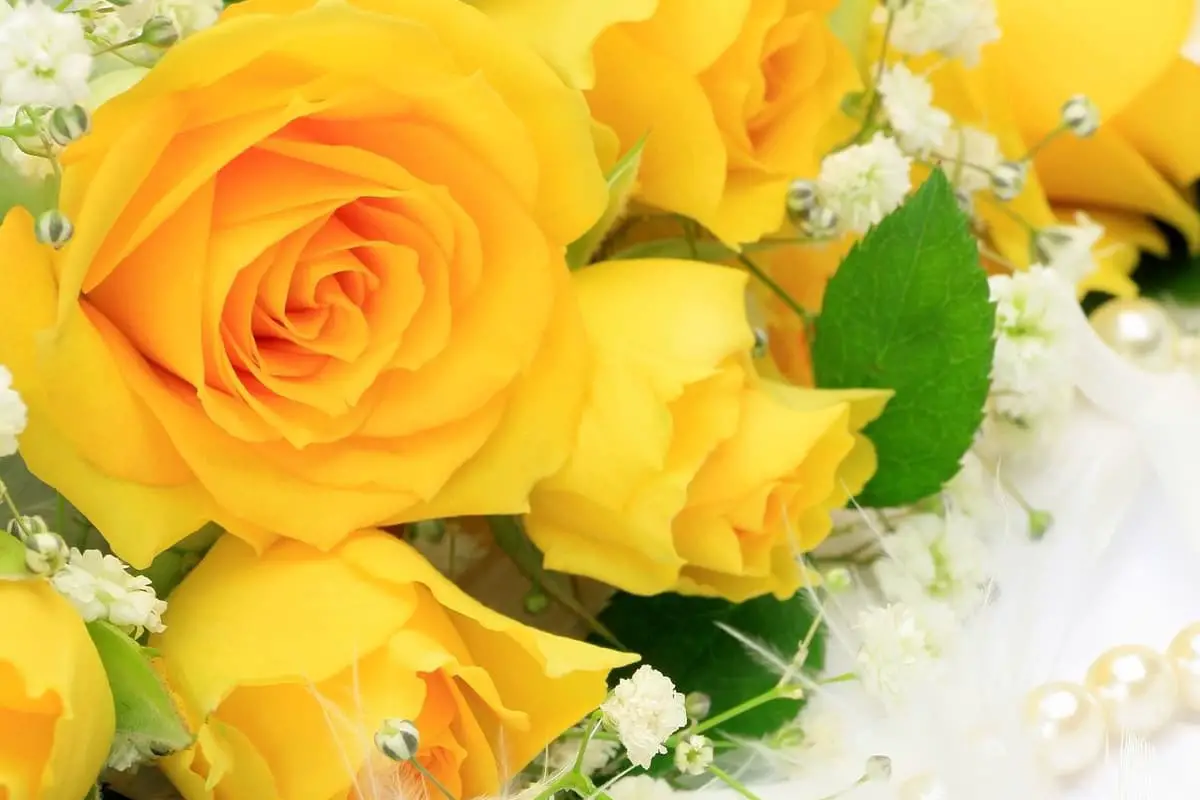
Roses, with their rich history and diverse symbolism, have captivated gardeners and romantics alike for centuries. These iconic flowers possess a sophisticated color language that transcends cultures. Deep red roses traditionally symbolize passionate love and desire, while pure white blooms embody innocence, purity, and new beginnings. Yellow roses, once associated with jealousy in Victorian times, now represent warm friendship and joyful affection.
The allure of roses extends far beyond their visual appeal. Their intoxicating fragrance, produced by aromatic compounds called phenylethyl alcohol and citronellol, has made them prized in perfumery and aromatherapy. This enchanting scent varies among cultivars, from the classic “Old Rose” fragrance to hints of fruit, spice, or even tea.
Horticulturalists have developed an astounding array of rose varieties, from compact miniatures to towering climbers, each with unique characteristics suited to different garden settings. Modern breeding programs have focused on enhancing disease resistance and repeat blooming capabilities, making roses more accessible to both novice and experienced gardeners.
In interior design, roses reign supreme as decorative elements. Their versatility allows them to complement various styles, from classic to contemporary. Placed in elegant vases on entrance hall consoles or sofa tables, roses create striking focal points that immediately elevate a space’s ambiance. Their ability to command attention makes them ideal for areas where first impressions matter most.
Whether cultivated in gardens or displayed indoors, roses continue to enchant with their timeless beauty, rich symbolism, and captivating fragrance, solidifying their status as the quintessential flower of love and admiration.
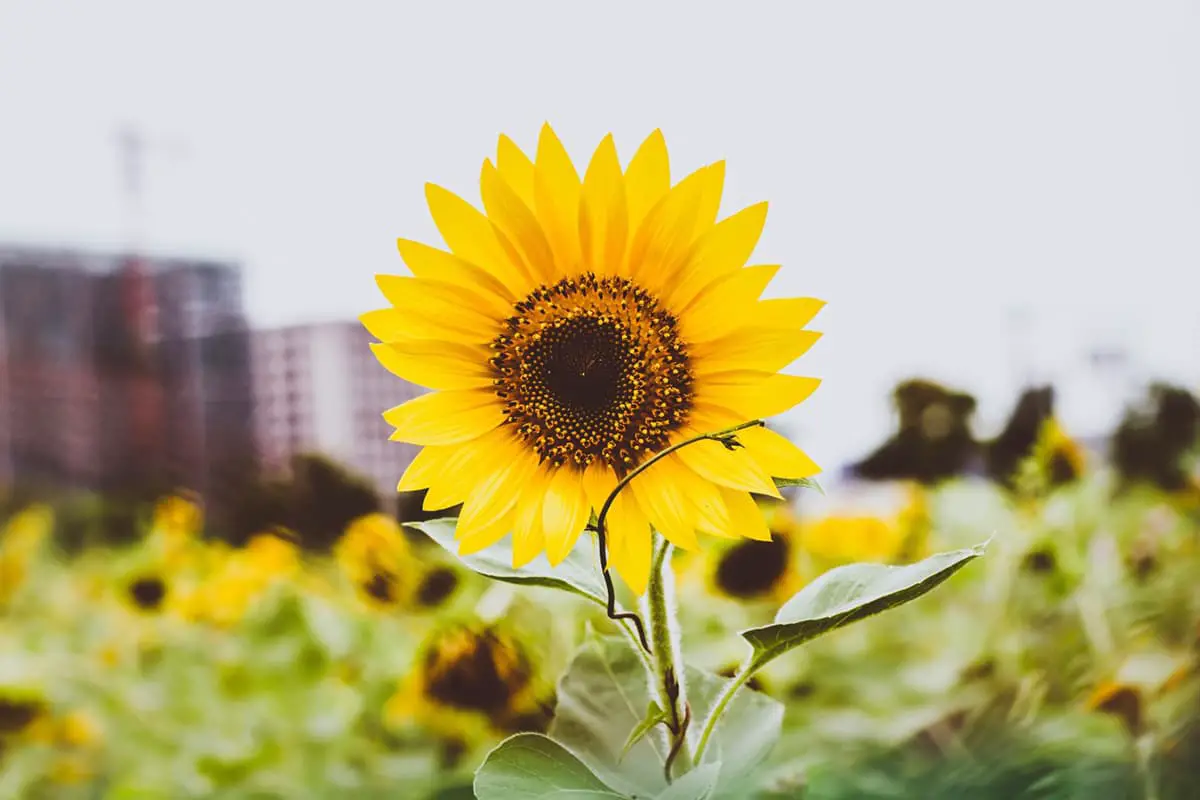
These radiant flowers symbolize admiration, loyalty, and warmth, all fundamental elements of a strong friendship. Helianthus annuus, commonly known as sunflowers, are not only visually striking but also versatile in their uses. Their large, daisy-like flower heads can reach up to 12 inches in diameter, creating a dramatic visual impact in gardens and floral arrangements.
Sunflowers are heliotropic, meaning their flower heads track the sun’s movement across the sky, a characteristic that metaphorically represents loyalty and devotion in friendships. Their bright yellow petals surrounding a rich brown center evoke feelings of joy and optimism, making them perfect for conveying positive emotions to friends.
Beyond their ornamental value, sunflowers offer practical benefits. After blooming, the flower heads can be dried and harvested for their nutritious seeds, which are rich in vitamins E and B1, as well as healthy fats and protein. This dual-purpose nature of sunflowers can symbolize the multifaceted nature of friendship – both beautiful and sustaining.
When used as a centerpiece on a dining table, sunflowers create a lively and welcoming atmosphere. Their bold presence and cheerful hue can instantly brighten a room, fostering a warm and inviting environment for shared meals and conversations with friends.
In the language of flowers, sunflowers represent adoration, longevity, and unwavering faith. Gifting these flowers to a friend conveys a message of lasting admiration and a desire for enduring companionship. Their association with the sun also implies vitality and energy, suggesting a friendship that is both life-affirming and invigorating.
Cultivating sunflowers can be a rewarding experience, as they are relatively easy to grow and can reach impressive heights of up to 16 feet, depending on the variety. This impressive growth can symbolize the potential for friendships to flourish and reach great heights when nurtured with care and attention.
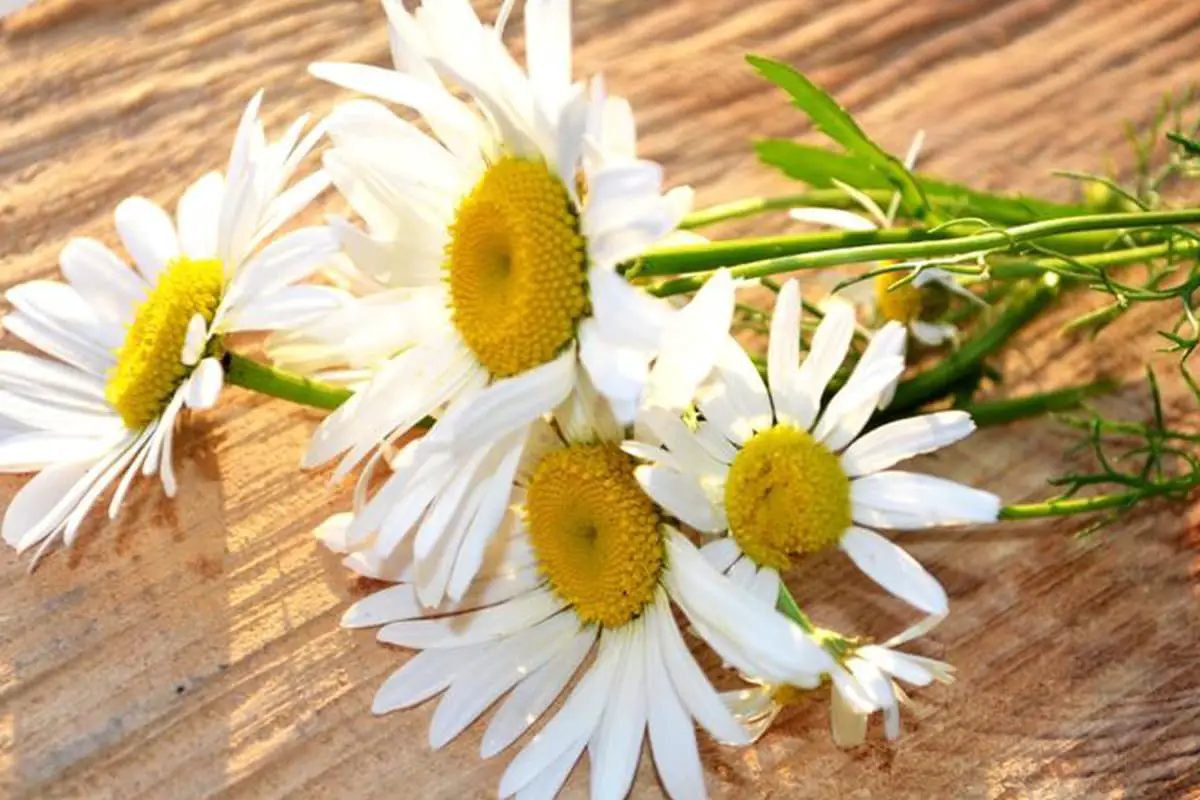
Daisies, with their cheerful and resilient nature, are versatile flowers that carry a rich tapestry of symbolism. While they embody various meanings, their most significant associations with friendship are energy, pride, and purity.
These hardy perennials, belonging to the Asteraceae family, are characterized by their distinctive white petals radiating from a bright yellow center. Their simple yet captivating appearance has made them a beloved flower in gardens and bouquets alike. The name “daisy” is derived from the Old English “daes eage,” meaning “day’s eye,” referring to how the flower opens at dawn and closes at dusk.
In the language of flowers, daisies symbolize a happy and optimistic spirit. Their sunny disposition and ability to thrive in various conditions make them a perfect metaphor for resilient friendships that can weather any storm. The daisy’s open face is said to represent honesty and open communication, both crucial elements in maintaining strong bonds between friends.
The energy associated with daisies is reflected in their tendency to grow in abundance, often creating vast carpets of white and yellow in meadows. This proliferation symbolizes the way true friendships can flourish and spread joy. The pride represented by daisies stems from their upright stance and ability to stand tall even after being stepped on, mirroring the strength and dignity found in enduring friendships.
The purity symbolized by daisies, particularly evident in their pristine white petals, speaks to the innocence and sincerity of true friendship. This association makes them an excellent choice for celebrating new friendships or reaffirming long-standing ones.
If you cherish your friendship and have confidence in your relationship, daisies are the perfect flowers to include in your next friendship bouquet. Their long-lasting nature as cut flowers also serves as a reminder of the enduring quality of strong friendships. Consider pairing them with other flowers or presenting them in a charming bundle of wildflowers for a thoughtful and meaningful gift that celebrates the joy and purity of your bond.
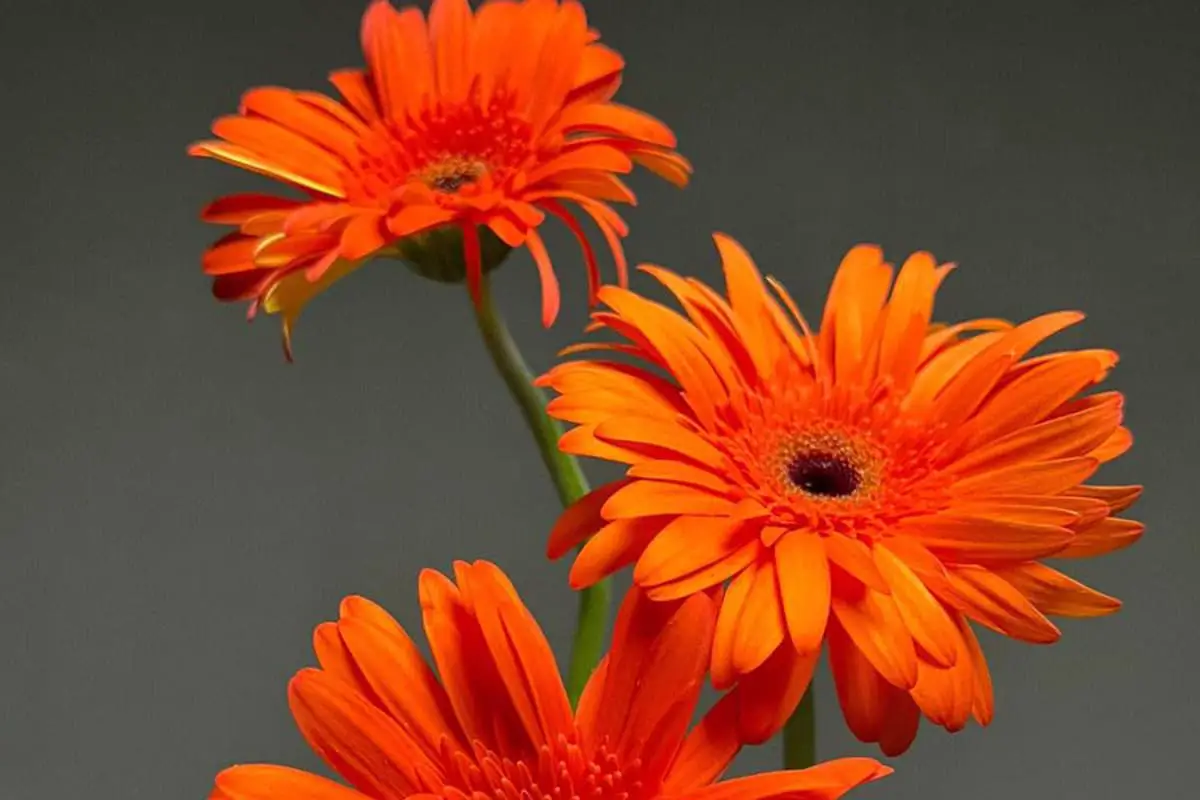
African daisies (Osteospermum spp.), with their vibrant and diverse colors, are known for their cheerful presence in gardens and floral arrangements. While yellow African daisies indeed symbolize the joy derived from interpersonal relationships, it’s worth noting that these flowers come in a wide array of hues, each carrying its own significance.
The yellow varieties, with their sunny disposition, are particularly associated with friendship, happiness, and the warmth of human connections. Their bright, golden petals surrounding a darker center create a striking visual effect that naturally draws the eye and uplifts the spirit.
A bouquet of African daisies, especially when incorporating various colors, can transform the ambiance of a room. Their daisy-like flowers, which typically measure 2-4 inches (5-10 cm) in diameter, create a visually appealing display that can instantly brighten any space. The flowers’ tendency to open in sunlight and close at night or in overcast conditions (known as nyctinasty) adds an element of natural dynamism to their presence.
Beyond their aesthetic appeal, African daisies are known for their air-purifying qualities. Like many plants, they can help improve indoor air quality by absorbing certain airborne pollutants, contributing to a healthier living environment. This, combined with their cheerful appearance, can indeed increase vitality and create a more positive atmosphere in a room.
When cultivating African daisies, it’s important to note that they thrive in full sun and well-drained soil. They are drought-tolerant once established, making them excellent choices for water-wise gardens. In cooler climates, they are often grown as annuals, while in warmer regions, they can be cultivated as short-lived perennials.
Whether used in garden borders, containers, or cut flower arrangements, African daisies offer a delightful way to infuse spaces with color, joy, and the spirit of positive relationships.
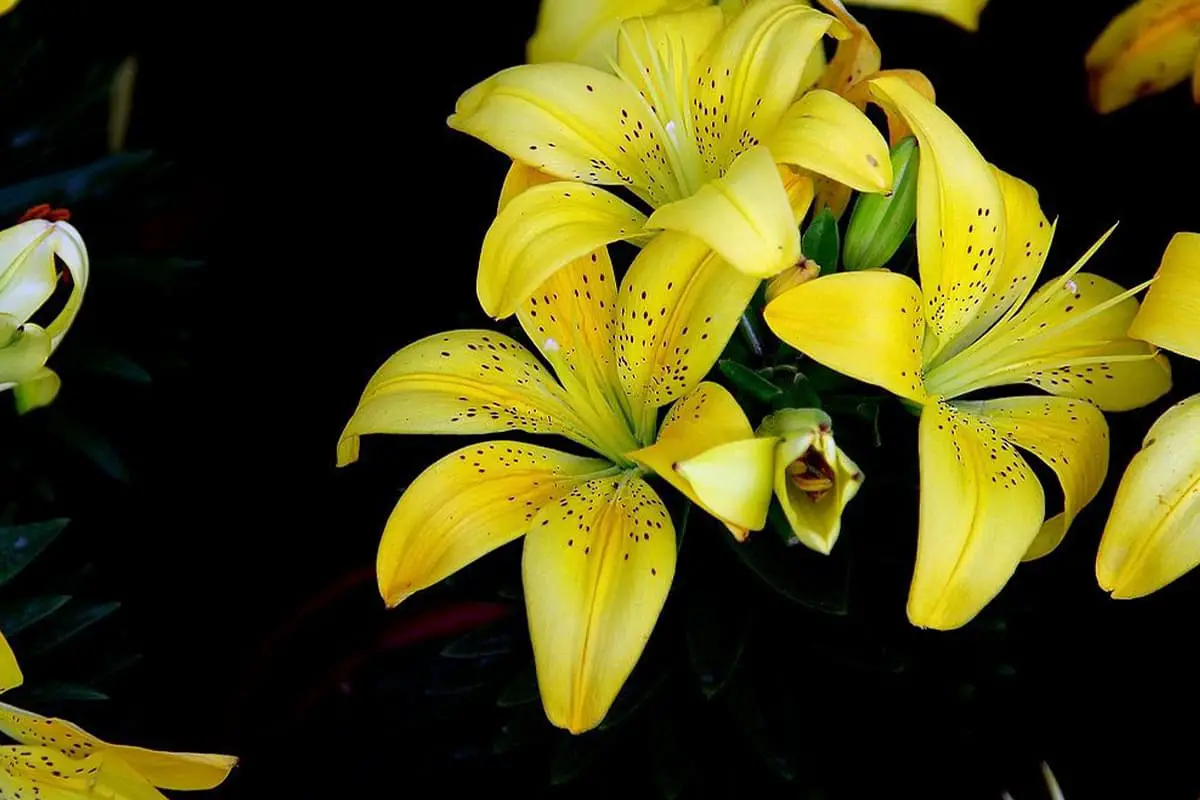
The deeply rooted symbolism of yellow lilies encompasses strength, dedication, and mutual support. These vibrant blooms, belonging to the genus Lilium, are renowned for their striking appearance and cultural significance. The golden hues of yellow lilies, ranging from pale lemon to rich amber, radiate warmth and positivity.
Each petal of the lily carries its own symbolic meaning, collectively representing a spectrum of admirable qualities: patience, empathy, respect, humor, understanding, and commitment. The structure of the lily flower itself, with its prominent stamens and pistil, symbolizes the balance and harmony found in strong relationships.
Yellow lilies, particularly varieties like the Asiatic or Oriental hybrids, are often associated with friendship and platonic love. Their cheerful color evokes feelings of joy and companionship, making them an ideal choice to communicate the depth and complexity of friendships. The sturdy stems of these lilies also metaphorically represent the strength and resilience often found in enduring friendships.
In horticultural terms, yellow lilies are prized for their ease of cultivation and impressive blooms. They thrive in well-drained soils and prefer full sun to partial shade, making them versatile additions to gardens or floral arrangements. Their trumpet-shaped flowers not only add visual interest but also often emit a pleasant fragrance, further enhancing their appeal.
When gifting yellow lilies or incorporating them into landscapes, one conveys a message of support, appreciation, and the celebration of shared experiences. This makes them a perfect floral choice for commemorating milestones in friendships, expressing gratitude, or simply brightening someone’s day with a thoughtful gesture.
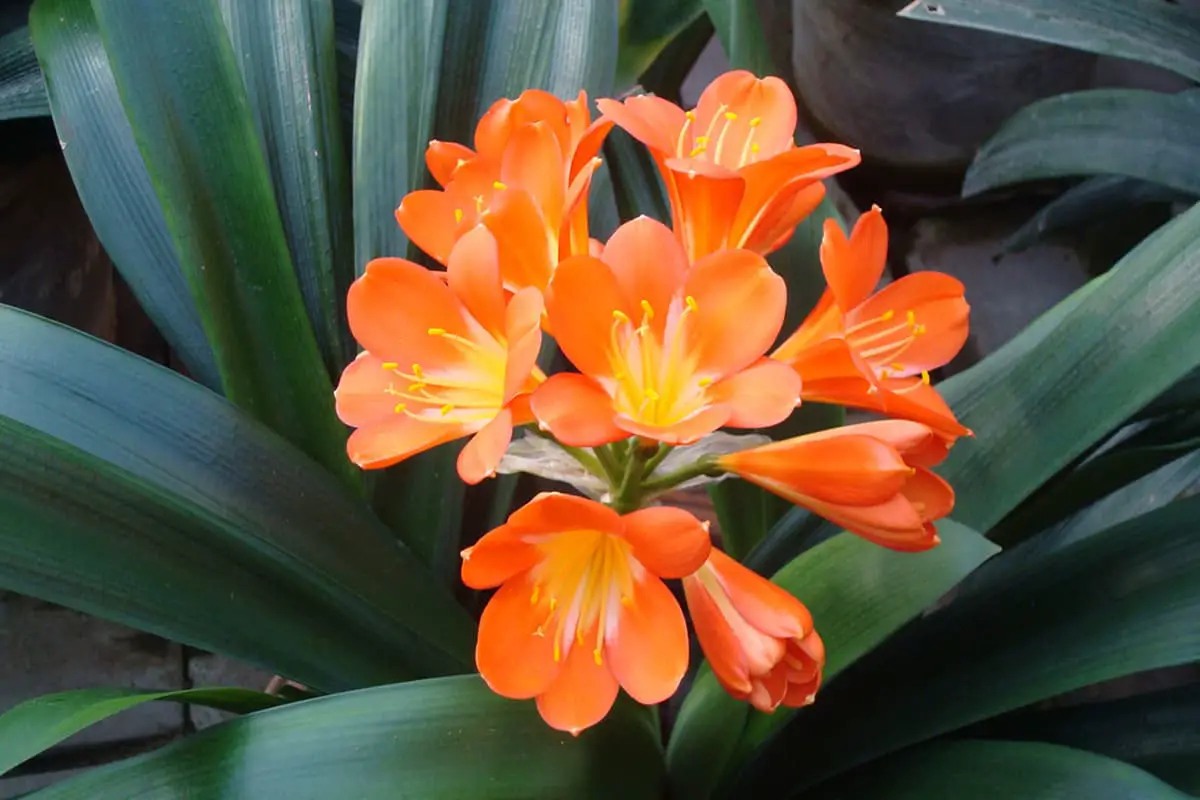
Clivia, also known as Kaffir lily or bush lily, is a genus of perennial flowering plants native to southern Africa. These evergreen plants are prized for their striking clusters of trumpet-shaped flowers and their ability to thrive in shaded conditions. The most common species, Clivia miniata, produces vibrant orange blooms, though cultivars in shades of yellow, red, and even near-white exist.
In the language of flowers, Clivia symbolizes modesty, gentleness, and politeness. Its beauty is understated yet unmistakable, much like a person who is talented but not arrogant, successful yet humble. The plant’s resilience and ability to bloom even in challenging conditions reflect the strength and endurance of true friendship.
Clivia’s growth habit is particularly noteworthy. It forms dense, strap-like leaf fans from which the flower stalks emerge, creating a naturalistic and elegant display. This arrangement can be seen as a metaphor for how genuine friendships provide a strong foundation from which beauty and positivity can flourish.
In cultivation, Clivia demonstrates patience and perseverance. It may take several years for a young plant to reach flowering size, but once established, it can bloom reliably for decades with proper care. This longevity parallels the nature of deep, lasting friendships that grow stronger over time.
The Clivia’s ability to thrive in shade makes it a valuable addition to gardens with limited sunlight, symbolizing how true friends can bring light and color to even the darkest corners of our lives. Its low-maintenance nature further emphasizes the ease and comfort of a well-established friendship.
In essence, the Clivia embodies the qualities of an ideal friend: beautiful without being showy, strong without being overbearing, and consistently present without being demanding. It serves as a living reminder of the value of cultivating and nurturing meaningful relationships in our lives.
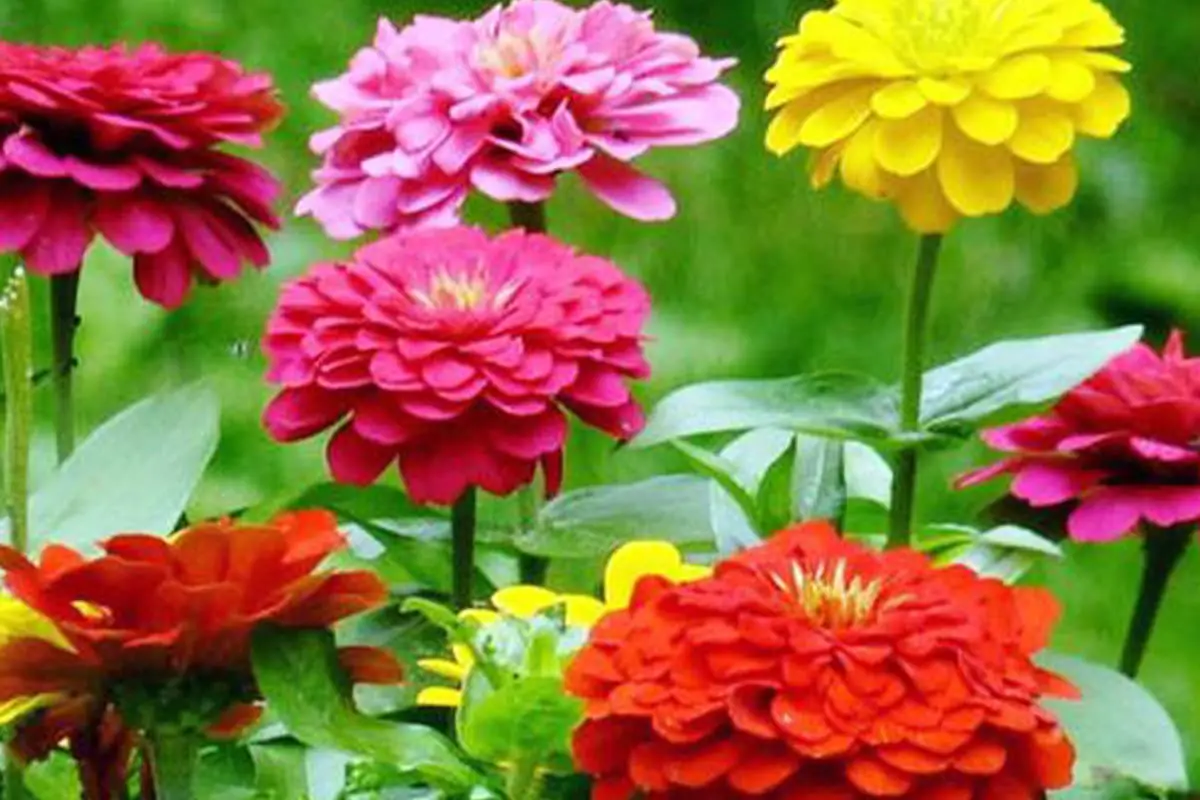
Symbolizing enduring friendship and fond remembrance, zinnias are vibrant, daisy-like flowers that bring cheerful color to gardens and bouquets alike. These resilient annuals, native to Mexico and Central America, are named after the German botanist Johann Gottfried Zinn.
Zinnias come in a wide array of colors, including red, orange, yellow, pink, purple, and white, making them versatile choices for various garden designs and floral arrangements. Their long-lasting blooms, which can persist from midsummer until the first frost, make them particularly apt symbols of lasting affection and loyalty in friendships.
In the language of flowers, zinnias generally represent thoughts of absent friends, enduring affection, and the constancy of friendship. Different colors can convey nuanced meanings:
Zinnias are not only beautiful but also easy to grow, attracting butterflies and hummingbirds to gardens. Their ability to thrive in various conditions and continue blooming throughout the season mirrors the resilience and constancy of true friendship.
Whether planted in a garden to remember a distant friend or included in a bouquet to celebrate a long-standing relationship, zinnias serve as colorful reminders of the enduring nature of friendship and the joy it brings to our lives.
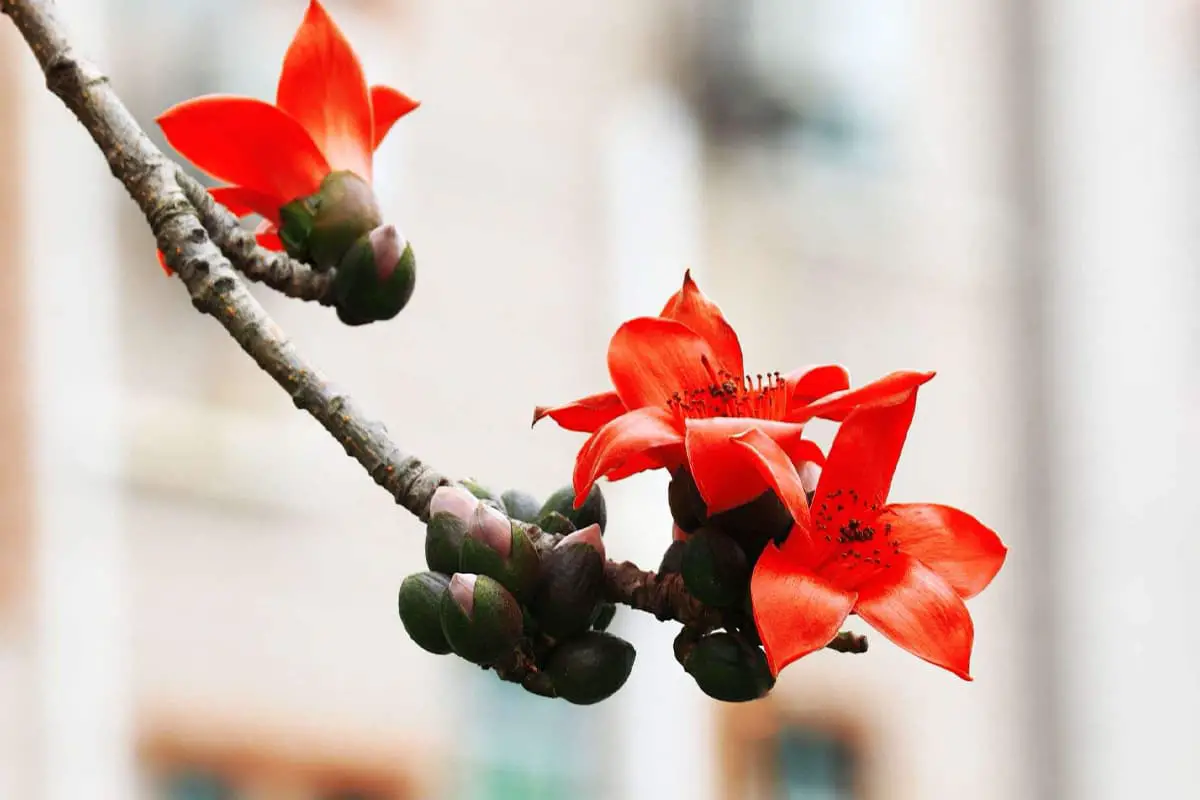
Cherish the people around you, cherish the happiness in front of you.
The kapok tree (Ceiba pentandra) is a majestic tropical species known for its impressive size and distinctive appearance. Native to Mexico, Central America, the Caribbean, northern South America, and tropical West Africa, this giant of the rainforest can grow up to 70 meters (230 feet) tall with a trunk diameter of up to 3 meters (10 feet).
The kapok tree is not only remarkable for its size but also for its cultural and economic significance. Its soft, silky fiber, also called kapok, has been used for centuries to stuff pillows, mattresses, and life jackets due to its buoyancy and water-resistant properties. The tree’s large, spreading canopy provides habitat for diverse wildlife, including epiphytes, birds, and primates.
In many cultures, the kapok tree holds spiritual importance. Some indigenous communities in the Amazon rainforest consider it sacred, believing it connects the earthly and spiritual realms. Its imposing presence in the landscape has inspired legends and folklore across various cultures.
The kapok’s life cycle is a testament to nature’s resilience and adaptability. It begins flowering after 5-10 years, producing large pods filled with seeds surrounded by the silky kapok fiber. These pods burst open when ripe, releasing the fiber to be carried by the wind, aiding in seed dispersal.
As we contemplate the kapok tree’s grandeur and significance, it serves as a powerful reminder of the importance of cherishing not only the people in our lives but also the natural wonders that surround us. The kapok’s long lifespan, sometimes exceeding 200 years, symbolizes the enduring nature of true happiness and the value of nurturing lasting relationships.
In our fast-paced world, the kapok tree stands as a silent sentinel, encouraging us to pause and appreciate the beauty and interconnectedness of life. It reminds us that happiness often lies in recognizing and valuing what we already have – the people who support us and the simple joys that each day brings.
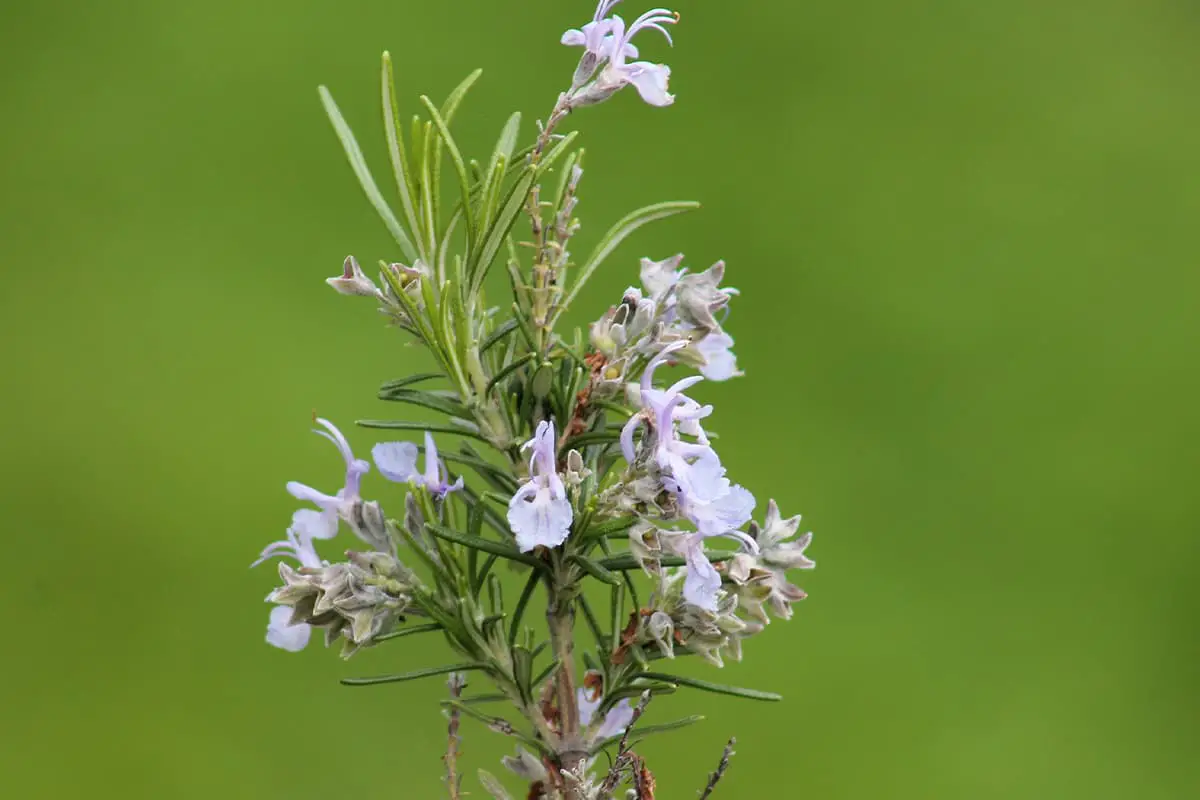
Rosemary (Rosmarinus officinalis) is a versatile and aromatic evergreen shrub that has long been cherished for its symbolic meaning, culinary uses, and medicinal properties. This hardy Mediterranean herb represents eternal life, love, and beautiful memories in the language of flowers.
In garden symbolism, rosemary’s evergreen nature and ability to thrive in harsh conditions have made it a powerful emblem of endurance and remembrance. Its association with love and memory dates back to ancient Greek and Roman times, where it was often used in wedding ceremonies and funerals alike.
Horticulturally, rosemary is prized for its:
Rosemary thrives in full sun and well-drained soil, preferring slightly alkaline conditions. It’s an excellent choice for Mediterranean-style gardens, rock gardens, and herb gardens. When planting, ensure good air circulation to prevent fungal issues.
Beyond its ornamental value, rosemary offers numerous practical applications:
By incorporating rosemary into your garden or landscape design, you not only add a beautiful and useful plant but also invite the rich symbolism of enduring love and cherished memories into your space.
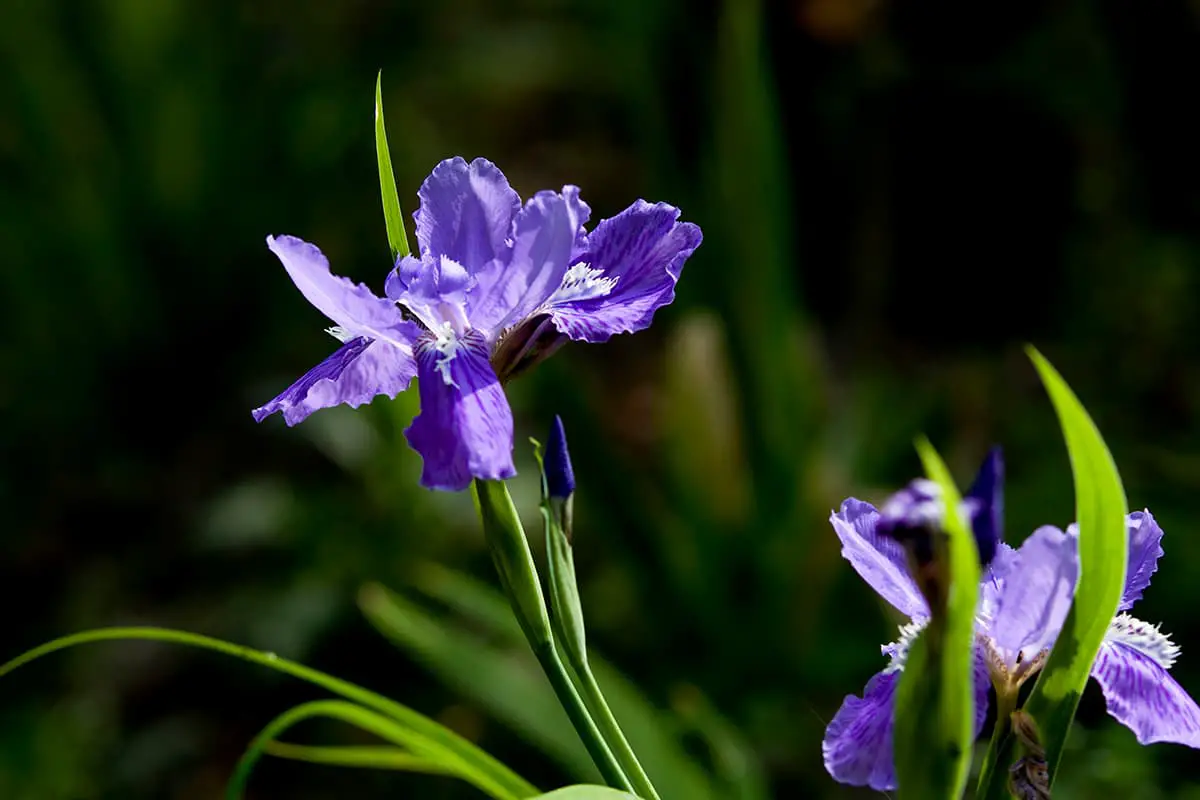
Symbolizes wisdom, courage, and hope, while also representing faith, valor, and admiration. This elegant flower promises a bright future with its diverse colors and intricate petals. In various cultures, the iris is associated with different meanings:
Irises come in a wide array of colors, each with its own symbolism:
In gardens, irises are prized for their hardiness and adaptability. They thrive in various climates and soil types, making them a versatile choice for both novice and experienced gardeners. Their sword-like foliage adds vertical interest to landscapes even when not in bloom.
Irises typically flower in late spring to early summer, with some varieties reblooming in fall. Proper care, including regular division every 3-5 years, ensures healthy growth and abundant blooms, promising a continuation of their beauty and symbolism for years to come.
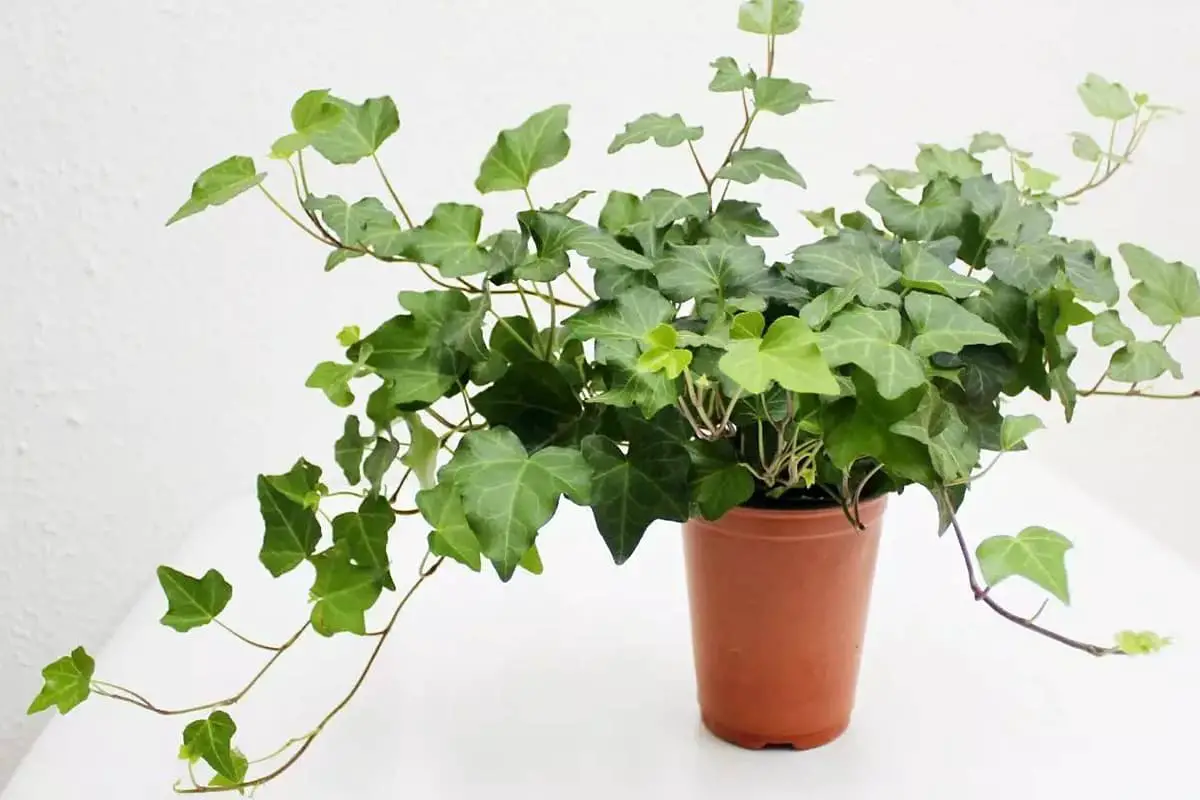
Friendship, fidelity, and eternal attachment.
Ivy (Hedera spp.) is a versatile and resilient evergreen vine that has long been associated with strong bonds and lasting relationships. This symbolism stems from the plant’s tenacious nature and its ability to cling tightly to surfaces, much like enduring friendships.
In various cultures and traditions, ivy represents:
Horticulturally, ivy is prized for its:
When gifting or using ivy in floral arrangements, it conveys a message of lasting friendship and mutual growth. Its rich symbolism and hardy nature make it a thoughtful choice for celebrating enduring relationships or marking significant milestones in friendships.
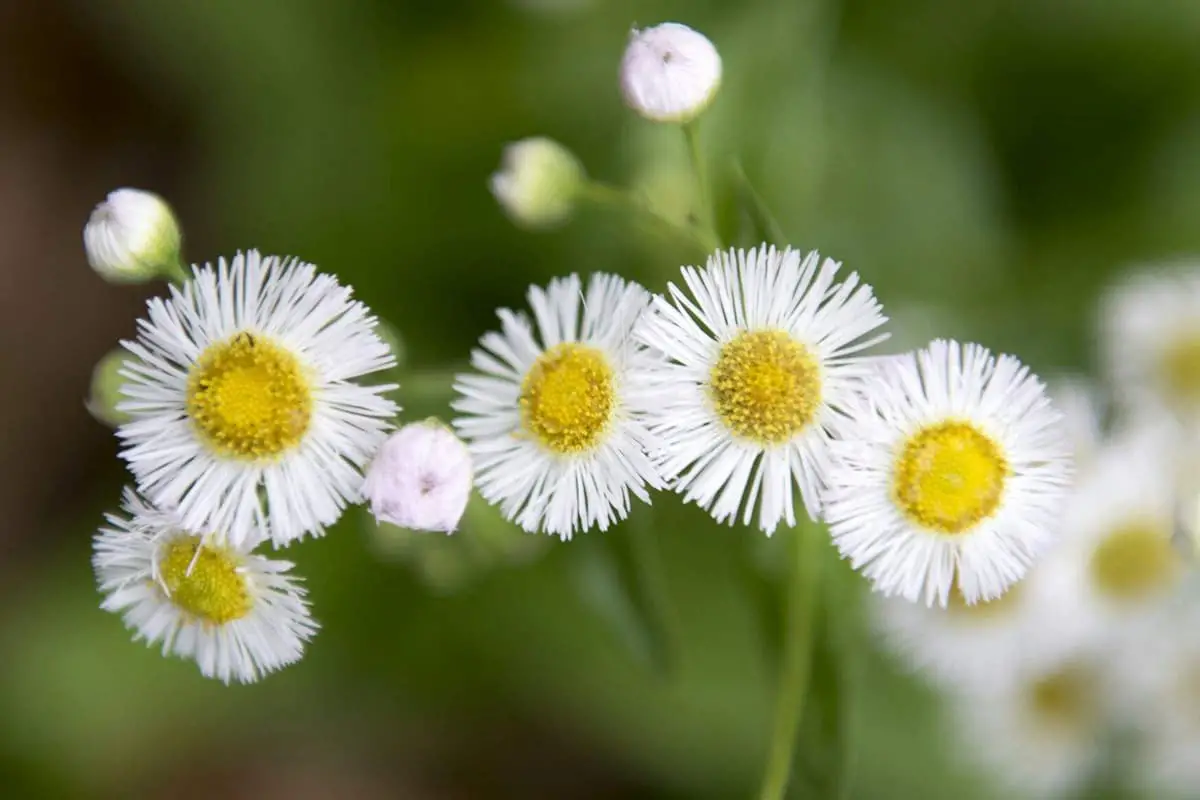
Chrysanthemums, with their vibrant and diverse blooms, hold a rich tapestry of symbolic meanings across various cultures, particularly in East Asia. These hardy perennials are revered for their representation of purity, nobility, longevity, auspiciousness, and true feelings.
In Chinese culture, chrysanthemums have been cultivated for over 3,500 years and are considered one of the “Four Gentlemen” in traditional art, alongside plum blossoms, orchids, and bamboo. The flower’s ability to bloom in autumn, when most other plants are fading, symbolizes fortitude and perseverance against adversity. This quality has led to its association with nobility of character and moral integrity.
The concept of longevity is deeply intertwined with chrysanthemums in East Asian traditions. In Japan, the chrysanthemum is the symbol of the Imperial Family, and the Emperor’s throne is called the Chrysanthemum Throne. The flower’s many petals are seen as representing long life, with some varieties having up to 1,000 petals.
Auspiciousness is another key attribute of chrysanthemums. In feng shui practices, these flowers are believed to bring good luck and positive energy to a home. Their presence is thought to promote harmony and balance in one’s living space.
The chrysanthemum’s representation of true feelings stems from its use in various cultural contexts to express sincerity and deep emotions. In the language of flowers, or floriography, chrysanthemums can convey messages of honesty, loyalty, and devoted love.
Different colors of chrysanthemums can carry specific meanings:
In horticulture, chrysanthemums (Chrysanthemum × morifolium) are prized for their diversity in form, color, and size. They range from daisy-like singles to pompons and complex incurves. With proper care, including regular pinching and disbudding, these flowers can produce stunning autumn displays in gardens or as cut flowers.
The cultural significance, symbolic depth, and horticultural versatility of chrysanthemums continue to make them a beloved and meaningful flower across the globe, embodying a complex array of virtues and sentiments.
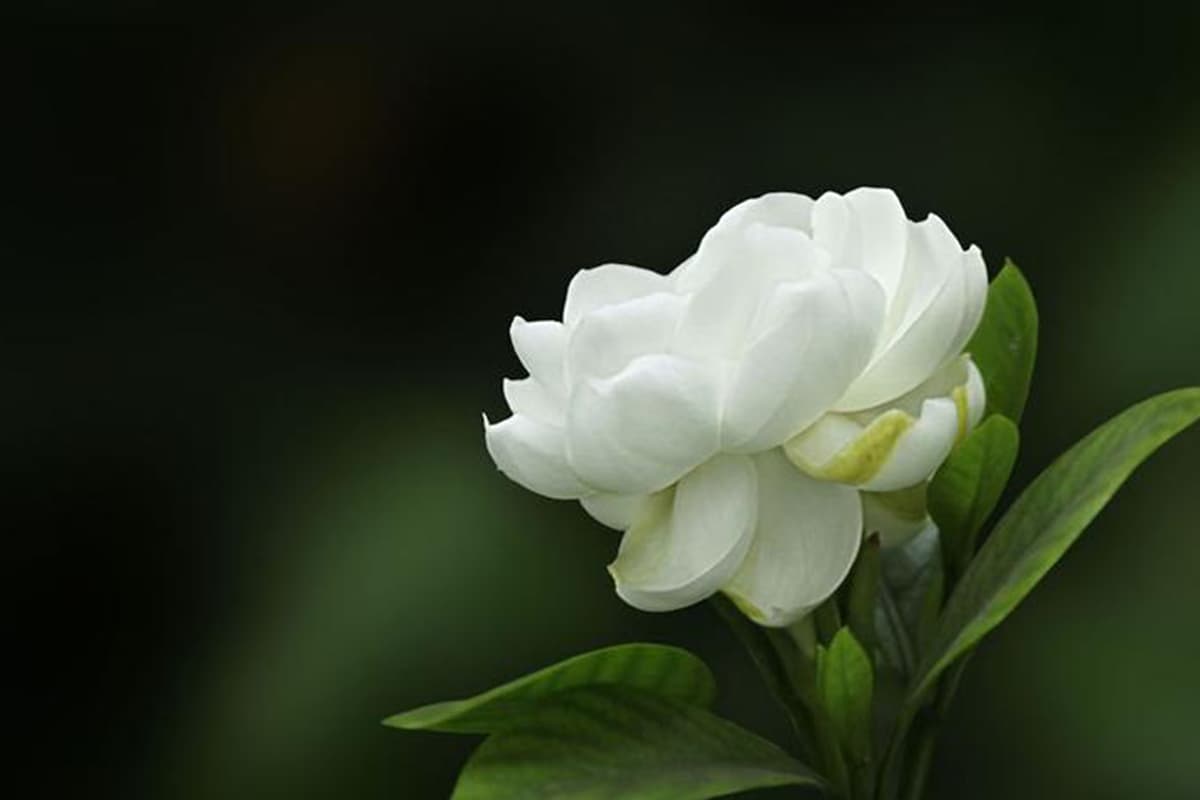
Eternal love, unwavering devotion, and the promise of joy.
Gardenias, with their intoxicating fragrance and pristine white blooms, have long been cherished symbols of purity and secret love. These evergreen shrubs, native to tropical and subtropical regions of Africa, Asia, and the Pacific Islands, belong to the Rubiaceae family and were named after the American naturalist, Dr. Alexander Garden.
The most commonly cultivated species, Gardenia jasminoides, boasts glossy, dark green leaves and exquisite, waxy flowers that unfurl from spiral buds. These blooms, often compared to camellias or roses in their elegance, can be single or double-petaled and typically measure 2-4 inches in diameter.
In the language of flowers, gardenias convey deep, often unspoken sentiments:
Gardenias require specific care to thrive:
While challenging to grow, the reward of successfully cultivating these fragrant beauties is immeasurable. Their intoxicating scent and stunning flowers make them popular in perfumes, bouquets, and as ornamental plants in gardens worldwide.
In essence, gardenias embody the patience and dedication required for nurturing love, mirroring the care they demand as plants. Their allure lies not just in their beauty, but in the promise of joy that comes from tending to something precious – be it a cherished relationship or a beloved garden.
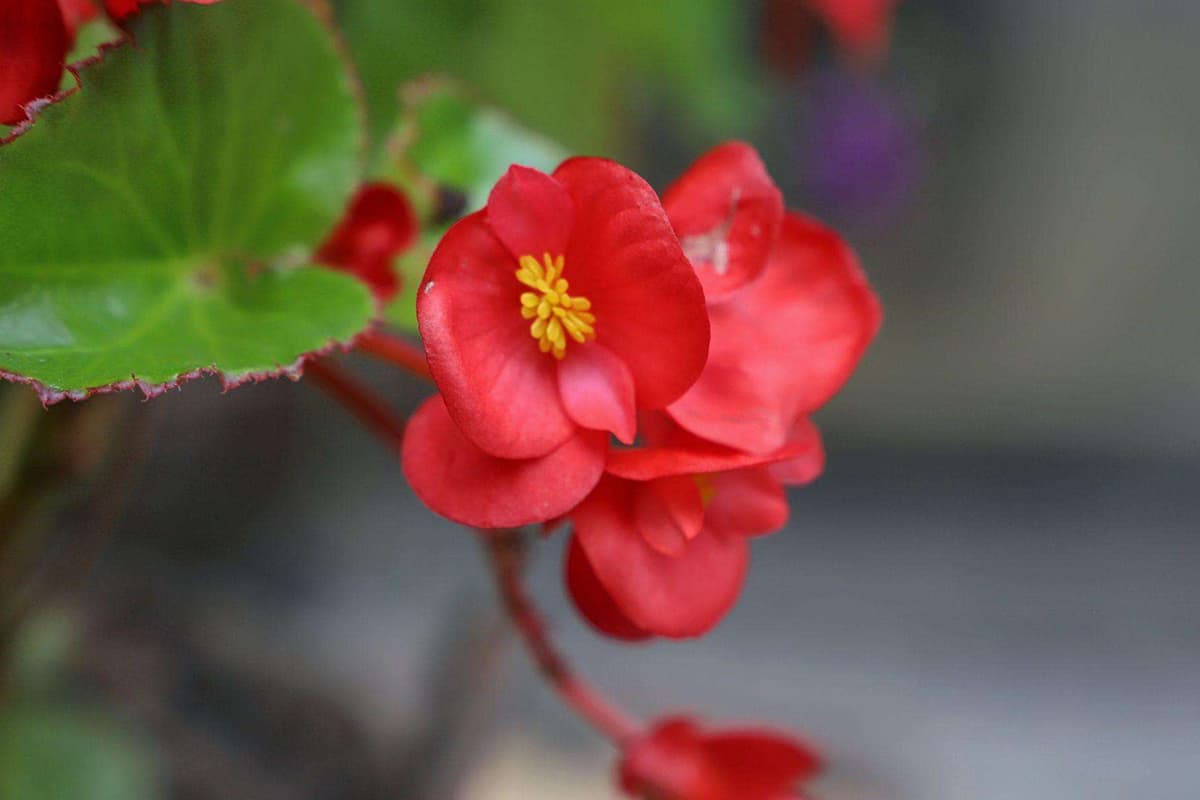
Sincere friendship and harmonious relationships.
Begonias, with their diverse array of colorful blooms and attractive foliage, are beloved ornamental plants that symbolize sincere friendship and harmonious relationships. These versatile plants, belonging to the genus Begonia, encompass over 1,800 species and countless cultivars, offering a wide range of shapes, sizes, and growth habits.
Native to tropical and subtropical regions, begonias are prized for their ability to thrive in various environments, from shaded garden beds to bright indoor spaces. Their adaptability and long-lasting blooms make them popular choices for both novice and experienced gardeners alike.
The begonia’s symbolism of sincere friendship likely stems from its reliable nature and consistent beauty. Much like a true friend, begonias provide steadfast companionship in the garden, offering vibrant colors and lush foliage throughout the growing season. Their low-maintenance requirements and forgiving nature further reinforce this symbolic connection to genuine friendship.
In horticultural practices, begonias are often categorized into three main groups:
When cultivating begonias, it’s essential to consider their specific needs:
By understanding and catering to these needs, gardeners can nurture thriving begonias that embody the plant’s symbolic meaning of sincere friendship, creating beautiful and harmonious spaces both indoors and out.
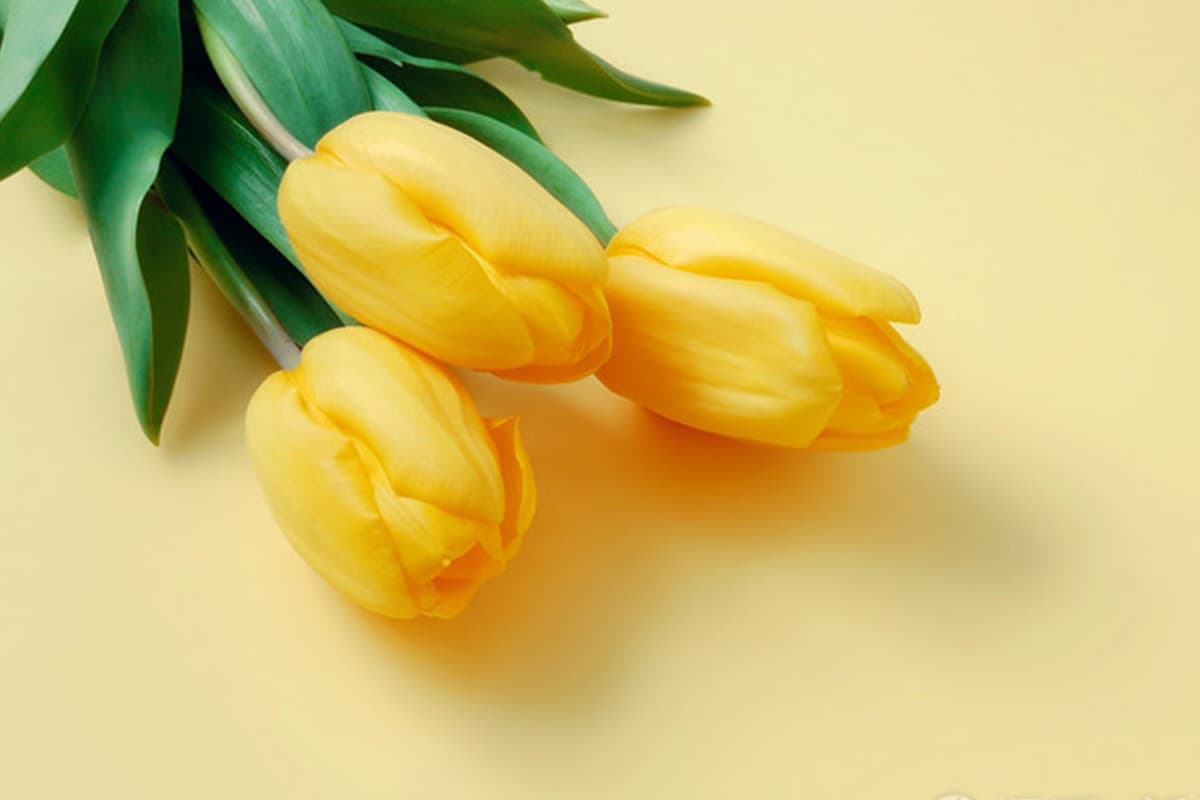
Tulips, members of the Liliaceae family, are iconic spring-blooming flowers that captivate with their vibrant colors and elegant shape. Their availability as cut flowers typically spans from late winter to early spring, making them a cherished symbol of the season’s renewal.
These flowers are deeply associated with joy, rebirth, and new beginnings, perfectly embodying the spirit of spring. Different tulip colors convey various sentiments:
Tulips are versatile in bouquets, whether as a single-variety arrangement or mixed with other spring flowers like daffodils, hyacinths, or ranunculi. Their simplicity and grace make them ideal for various occasions, from birthdays to housewarmings.
When gifting tulips to friends, consider these tips:
To extend the vase life of tulips:
By adding tulips to a friendship bouquet in spring, you’re not only conveying your caring message but also celebrating the season’s renewal and the joy of your relationship.
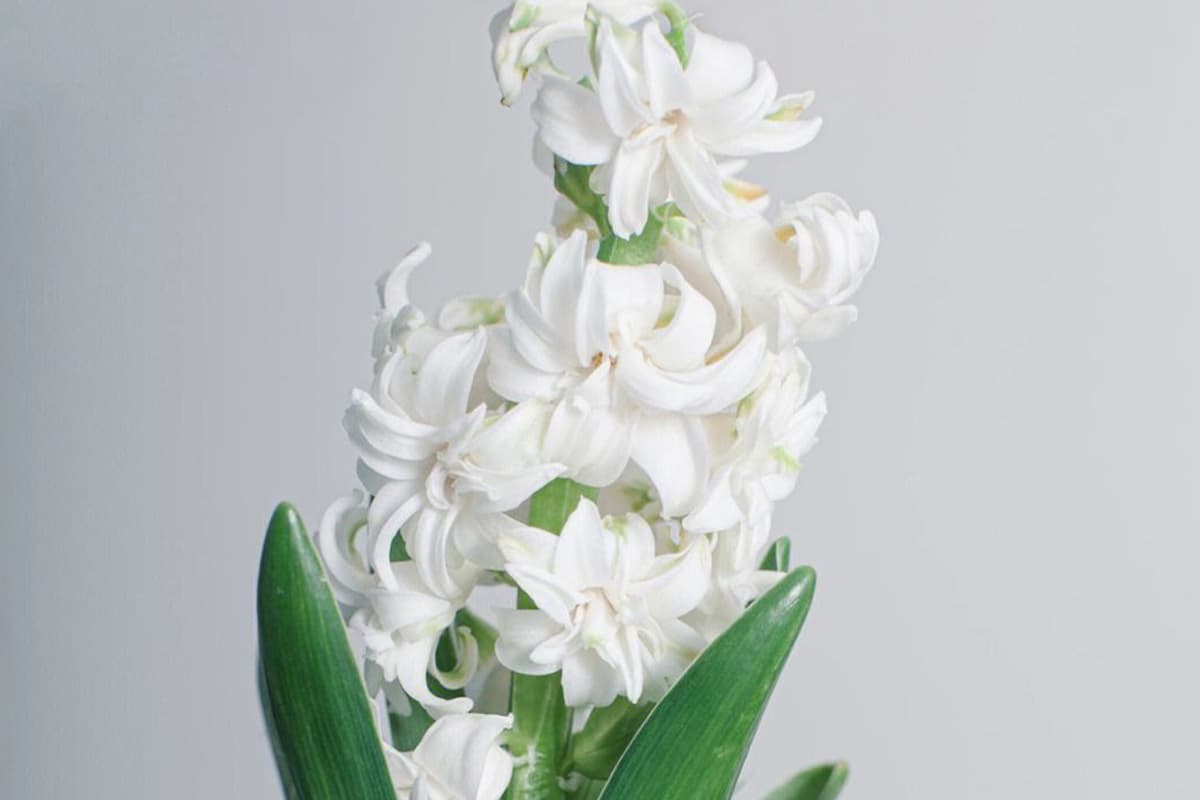
Exquisite hyacinths (Hyacinthus orientalis) convey profound messages of goodwill, gratitude, and steadfastness in the language of flowers. These fragrant spring-blooming bulbs, with their densely packed spikes of star-shaped florets, have captivated gardeners and flower enthusiasts for centuries.
In floriography, hyacinths generally symbolize sincerity and humility. Gifting hyacinths to a friend serves as an eloquent way to express remorse with a heartfelt “I’m sorry” or to convey genuine goodwill and positive intentions.
The rich palette of hyacinth colors allows for nuanced communication:
Originating from the eastern Mediterranean region, hyacinths have a rich cultural history dating back to ancient Greek mythology. The flower is said to have sprung from the blood of Hyacinthus, a youth beloved by the god Apollo, adding layers of depth to its symbolic meanings.
When cultivating hyacinths, remember they prefer well-drained soil and full sun to partial shade. These low-maintenance bulbs are perfect for borders, rock gardens, or forced indoor blooming, bringing their intoxicating fragrance and symbolic significance into any space.
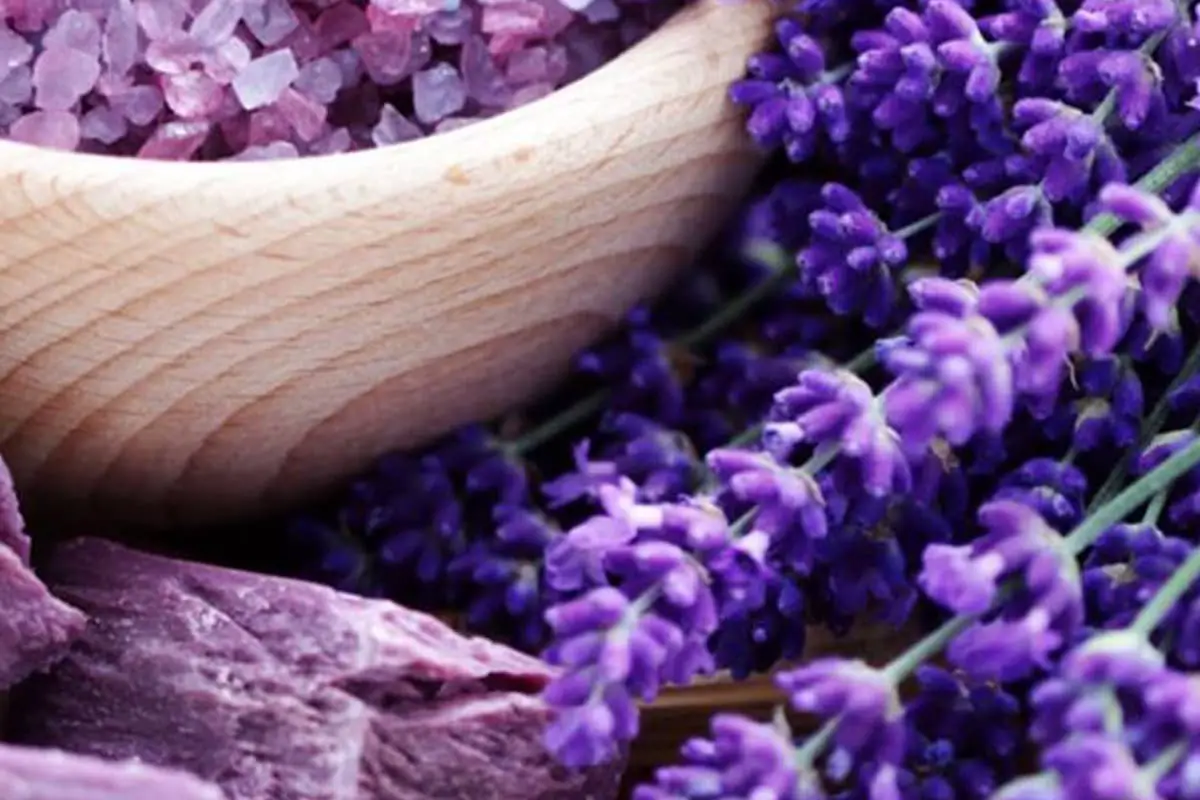
Lavender (Lavandula spp.) is a versatile and beloved aromatic herb that adds both visual charm and olfactory delight to floral arrangements. Its slender spikes, adorned with small, clustered flowers, contribute a spectrum of soothing hues ranging from silver-green foliage to soft blue and rich purple blossoms. This Mediterranean native not only enhances the aesthetic appeal of a bouquet but also infuses it with a calming, distinctive fragrance.
In the language of flowers, lavender carries profound symbolism. It represents dedication, making it an thoughtful choice for a floral gift to someone you deeply care about. The plant’s history of use in traditional medicine and aromatherapy has imbued it with associations of healing and relaxation. Consequently, including lavender in a bouquet can serve as a gesture of comfort to a friend experiencing stress or anxiety.
Beyond its calming properties, lavender embodies a rich tapestry of meanings. It symbolizes purity, silence, and devotion in various cultural contexts. In Victorian flower language, it was often associated with acknowledgment of a sentiment, particularly “distrust.” However, modern interpretations have shifted towards more positive connotations, emphasizing trust, serenity, and grace.
Horticulturally, lavender is prized for its drought tolerance and ability to thrive in poor soils, making it a staple in water-wise and Mediterranean gardens. When incorporating lavender into bouquets, it’s worth noting that different species offer slight variations in color and scent. English lavender (Lavandula angustifolia) is often preferred for its sweet fragrance, while French lavender (Lavandula stoechas) offers a more camphoraceous aroma and distinctive floral bracts.
For optimal vase life, harvest lavender stems when the lower third of the flower spike has opened. Strip the lower leaves and place in cool water. The addition of lavender to mixed bouquets not only contributes to the visual and aromatic composition but can also help extend the life of other flowers due to its natural antimicrobial properties.
In essence, lavender in a bouquet is more than just a beautiful flower; it’s a multisensory experience that conveys deep sentiment, promotes wellbeing, and connects the recipient to a rich botanical heritage.
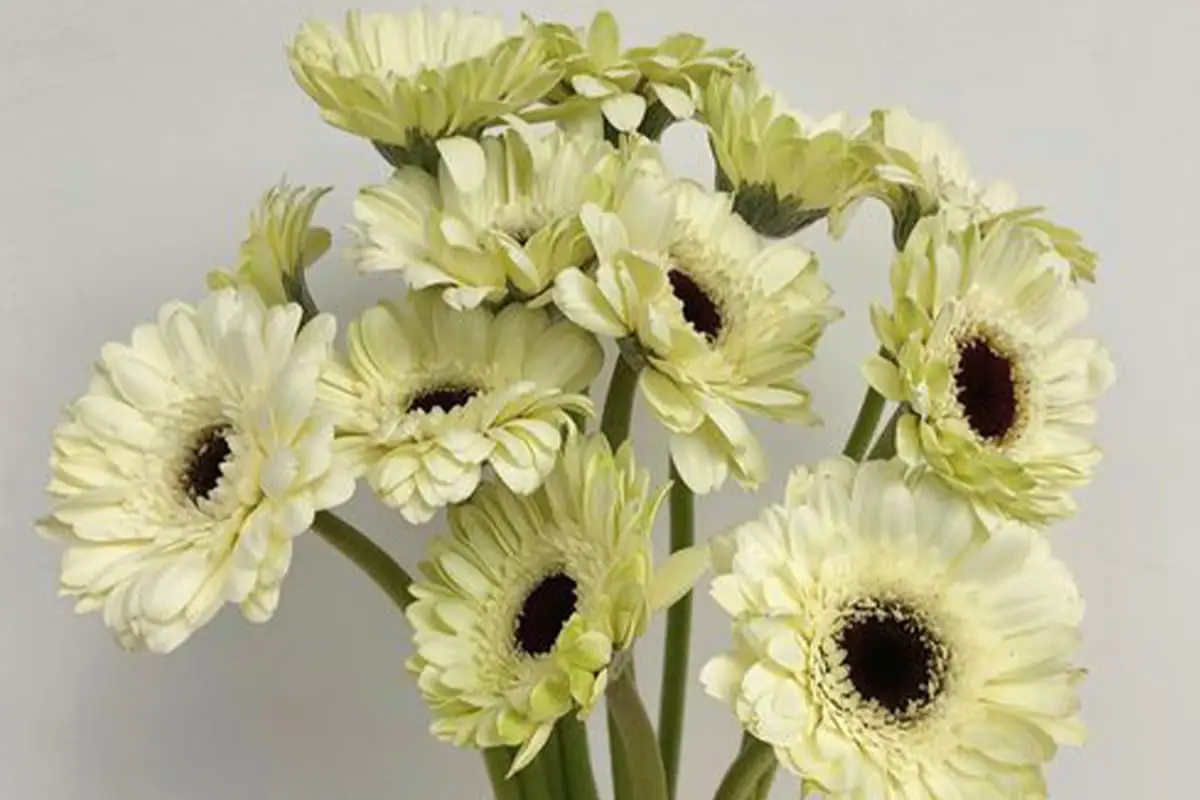
Anthurium, with its distinctive heart-shaped flowers and glossy leaves, symbolizes an optimistic and cheerful spirit. This tropical plant, native to the Americas, is prized for its long-lasting blooms and striking appearance. The most common varieties showcase vibrant red spathes, though they can also be found in shades of pink, white, and even green.
Gifting a bouquet of anthurium conveys more than just beauty; it carries a meaningful message of positivity and joy. Presenting these flowers during celebratory times expresses a heartfelt wish for the recipient’s daily life to be filled with smiles and happiness. This sentiment is particularly fitting for occasions such as promotions, housewarming parties, or to congratulate someone on a personal achievement.
Anthuriums are not only aesthetically pleasing but also have practical benefits. Known for their air-purifying qualities, they can help improve indoor air quality, making them an excellent choice for both home and office environments. Their low-maintenance nature and ability to bloom year-round further enhance their appeal as both a gift and a long-term companion plant.
In the language of flowers, anthurium’s heart shape is often associated with hospitality, making it an ideal gift to welcome guests or new neighbors. Its long-lasting blooms, which can persist for weeks or even months with proper care, serve as a enduring reminder of the giver’s warm wishes and positive intentions.
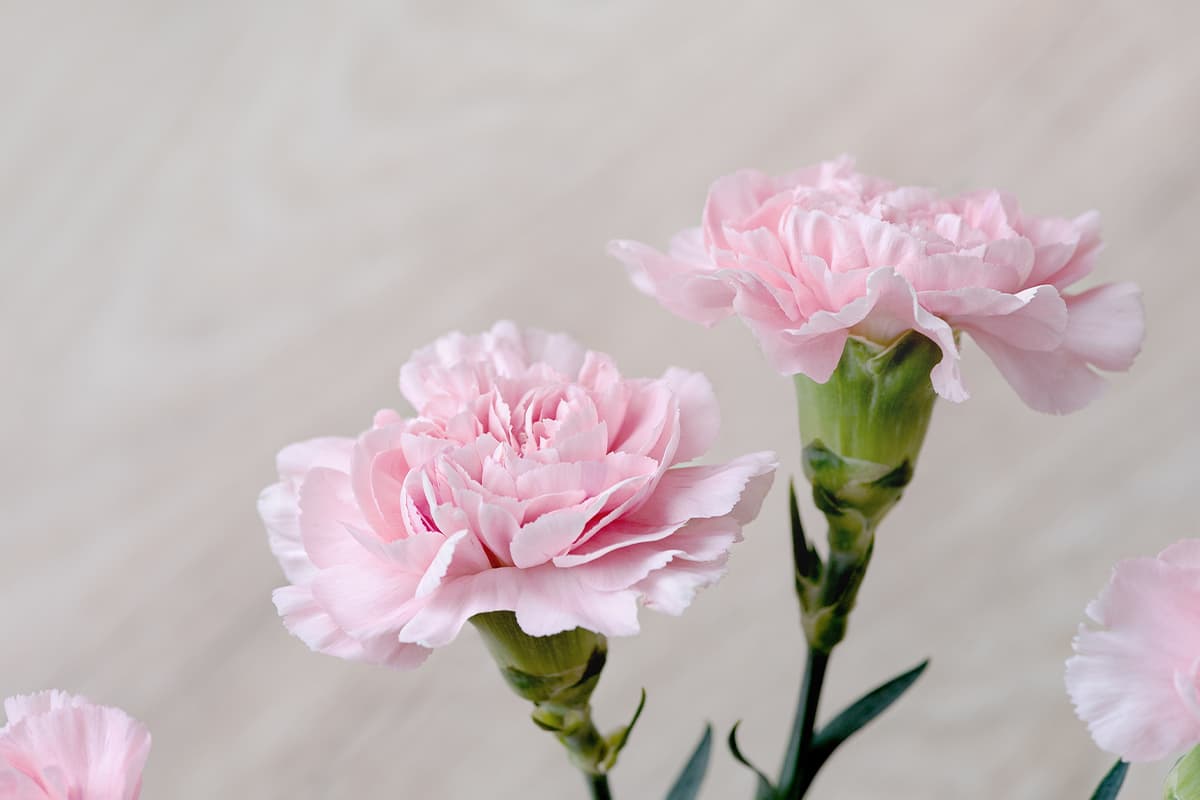
Carnations (Dianthus caryophyllus) are indeed cherished flowers that symbolize various sentiments, including friendship. These fragrant blooms are prized for their longevity and diverse color palette, making them versatile in both floral arrangements and symbolic gestures.
While carnations generally represent admiration and respect, their specific meanings can vary significantly based on their color:
The yellow carnation, in particular, carries multiple layers of meaning:
It’s worth noting that the meaning of flowers can vary across cultures. In some European countries, for instance, yellow carnations may symbolize disappointment or rejection. Therefore, it’s always wise to consider cultural context when giving flowers.
Carnations are relatively easy to grow and care for, making them popular in gardens as well as floral gifts. They prefer full sun, well-draining soil, and moderate watering. With proper care, these perennials can bloom for extended periods, providing long-lasting beauty and fragrance.
Whether given as a bouquet or grown in a garden, carnations serve as a beautiful reminder of friendship, respect, and the various emotions they represent. Their rich symbolism and hardy nature have ensured their place as one of the most beloved flowers in cultivation for over 2,000 years.
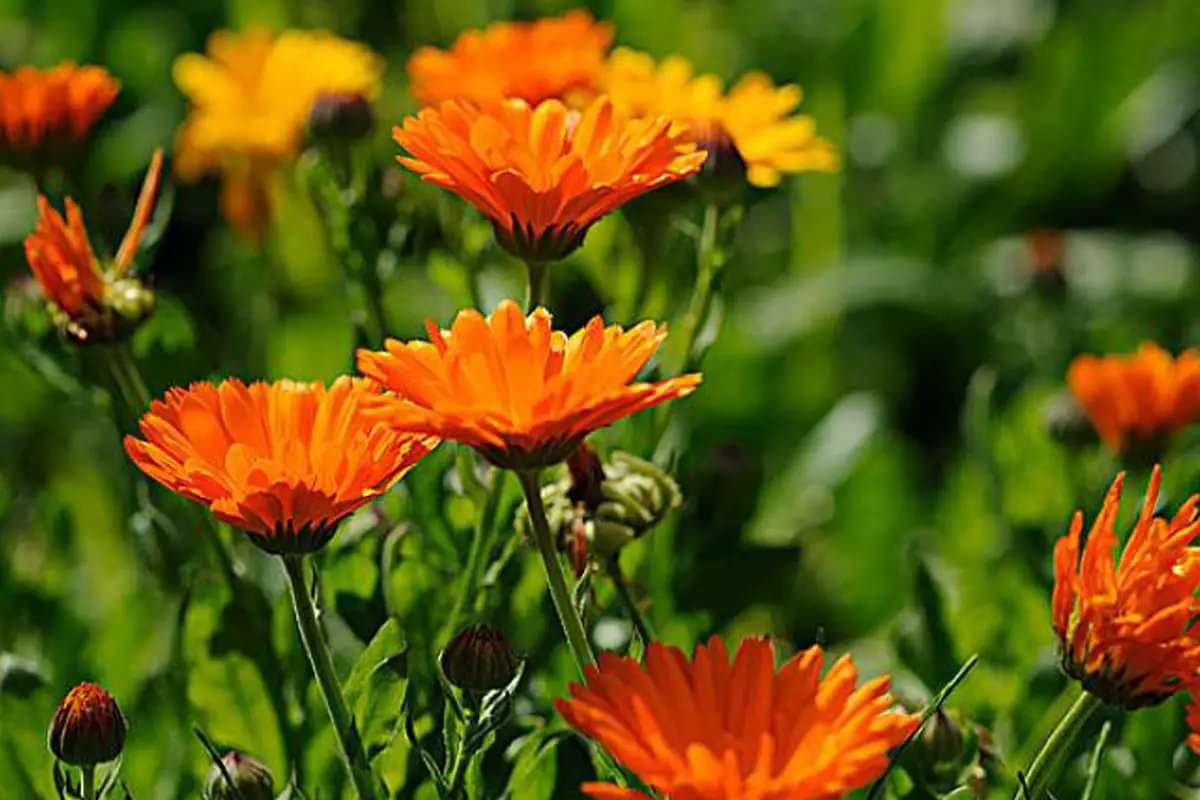
Marigolds (Tagetes spp.) are vibrant and versatile flowers that have captivated gardeners and flower enthusiasts for centuries. These annual plants, native to the Americas, are renowned for their bold colors and distinctive appearance, typically featuring layered petals in shades of yellow, orange, and red.
Symbolically, marigolds represent a spectrum of noble qualities. In many cultures, they are associated with the sun, passion, and creativity. Their bright, long-lasting blooms symbolize endurance and patience, qualities highly valued in both personal relationships and self-development.
The gift of marigolds carries multiple meanings:
Horticulturally, marigolds are prized for their ease of cultivation and versatility in garden design. They thrive in full sun and well-drained soil, making them excellent choices for borders, containers, and as companion plants in vegetable gardens due to their pest-repelling properties.
When gifting marigolds, consider presenting them in a decorative pot or as part of a carefully arranged bouquet to enhance their symbolic significance and visual appeal. This gesture not only compliments the recipient but also introduces a touch of warmth and positivity to their environment.
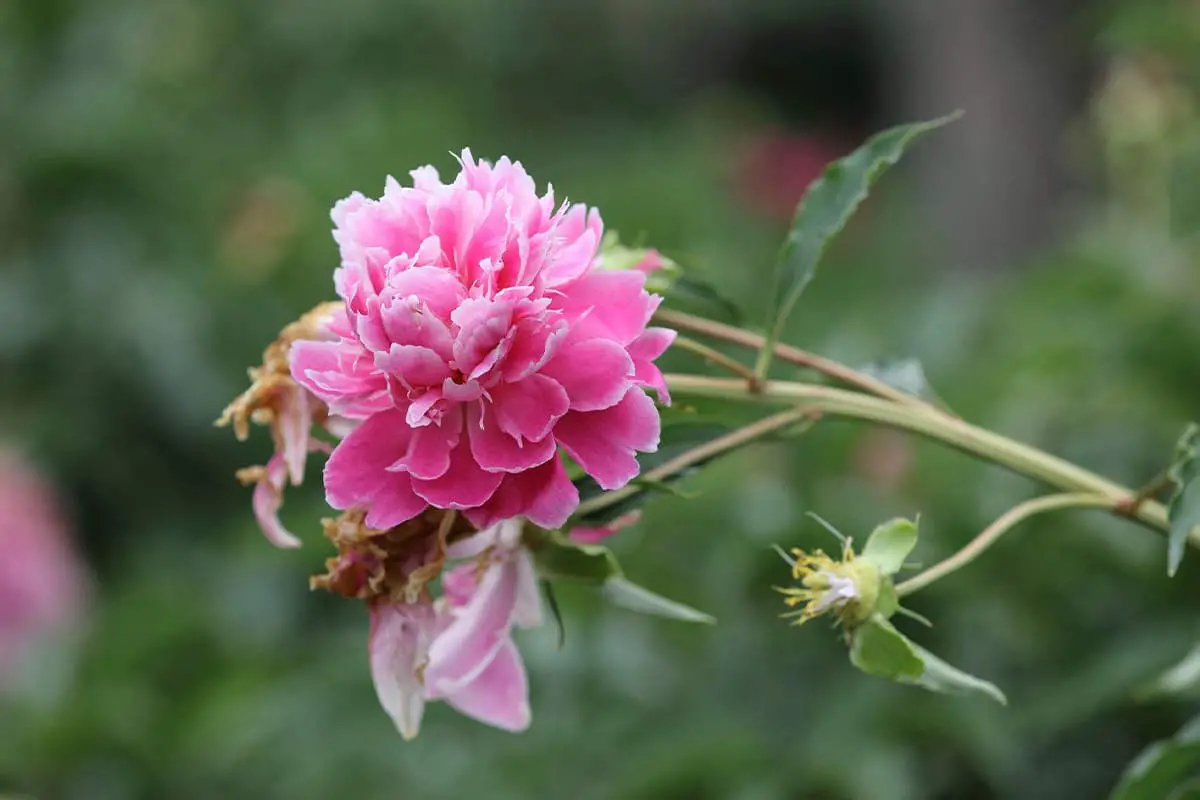
The peony, scientifically known as Paeonia, is often referred to as the “King of Flowers” or “Queen of Herbs” in various cultures. This magnificent perennial is renowned for its large, luxuriant blooms and diverse color palette, including shades of white, pink, red, purple, yellow, and even rare green varieties. Native to Asia, Europe, and Western North America, peonies have been cultivated for thousands of years for their ornamental and medicinal properties.
Peonies typically bloom in late spring to early summer, earning them the poetic nickname “flower of the last spring days” in some regions. Their flowering period, though relatively short, is highly anticipated in many gardens. The city of Luoyang in China is particularly famous for its peonies, while in the United States, the peony is the state flower of Indiana.
In the language of flowers, peonies carry rich symbolism. They are often associated with honor, prosperity, and compassion. In Chinese culture, the peony symbolizes wealth, honor, and high social status, which is why it’s sometimes called the “flower of riches and honor.” In Western traditions, peonies can represent romance, a happy marriage, and bashfulness.
The peony’s cultural significance extends to art and literature. In traditional Chinese and Japanese paintings, peonies are a favored subject, symbolizing female beauty and reproduction. In European art, peonies often appear in still life paintings, representing the fleeting nature of beauty and life.
Horticulturally, peonies are prized for their longevity and relatively low maintenance once established. They prefer well-drained, fertile soil and full sun to partial shade. With proper care, peony plants can thrive for decades, sometimes even outliving their caretakers.
There are three main types of peonies:
When giving peonies as a gift, they can convey various messages depending on the context and color choice. Generally, they symbolize best wishes, prosperity, and admiration. In a romantic context, they might express a deep, sincere affection or a bashful attraction. Between friends, peonies can represent appreciation and the strength of the friendship bond.
In conclusion, the peony’s stunning beauty, rich history, and deep cultural significance make it a beloved flower worldwide. Whether adorning gardens, featuring in artworks, or given as thoughtful gifts, peonies continue to captivate and inspire with their ephemeral yet unforgettable blooms.
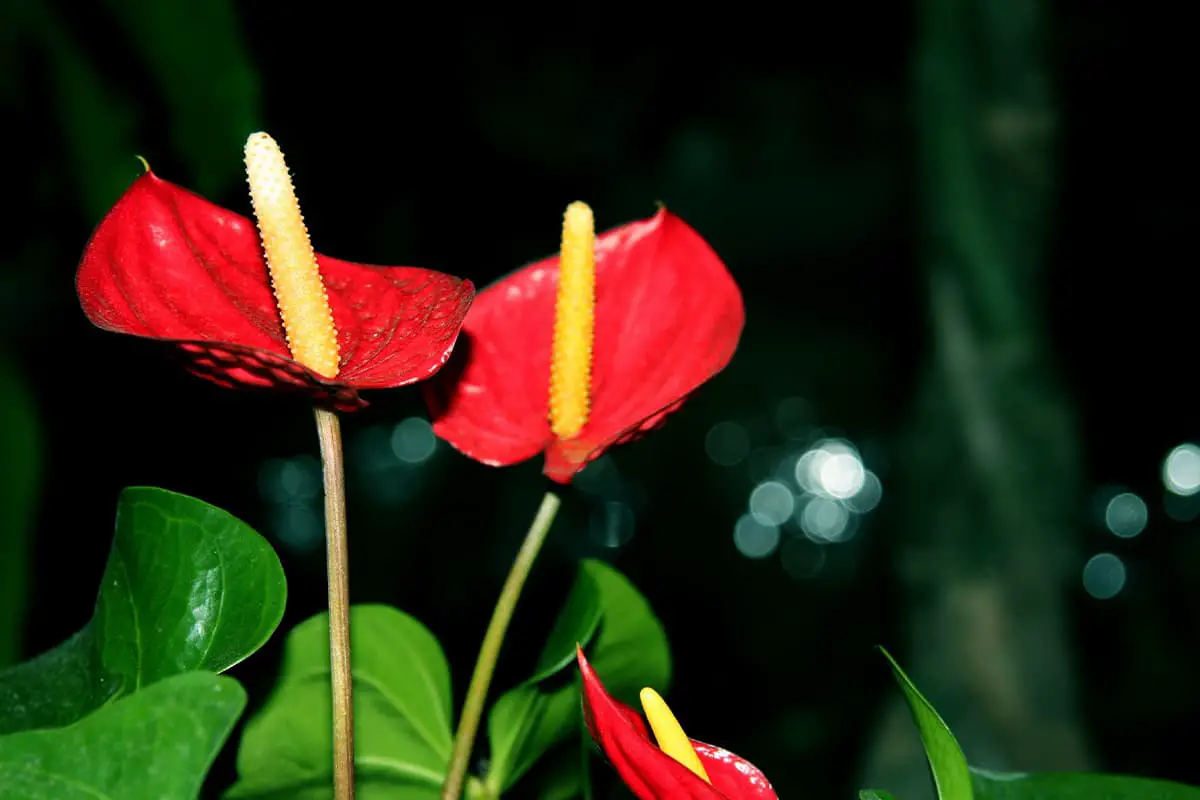
The flamingo flower, botanically known as Anthurium, is a striking tropical plant prized for its vibrant, heart-shaped blooms and glossy foliage. While red and pink are indeed popular colors, Anthurium species and cultivars offer a diverse palette including white, green, purple, and even multi-colored varieties. The plant’s unique structure consists of a colorful, modified leaf called a spathe, which surrounds a protruding spadix where the tiny true flowers reside.
In the language of flowers, the Anthurium symbolizes hospitality, happiness, and abundance, in addition to the mentioned qualities of ambition, passion, and fervor. This makes it an excellent gift not only for passionate friends but also for celebrating new beginnings, career achievements, or as a welcoming gesture.
Native to the tropical rainforests of Central and South America, Anthuriums require specific care to thrive:
When gifting Anthuriums, consider accompanying them with care instructions to ensure your friend can enjoy their beauty for an extended period.
Friendship, like the Anthurium, is resilient and multifaceted. It adapts to various circumstances, offering support and beauty in both times of celebration and challenge. Just as the Anthurium’s striking appearance belies its complex care needs, true friendship requires nurturing, understanding, and mutual growth.
Expressing friendship through the gift of flowers is indeed a beautiful gesture. The Anthurium, with its long-lasting blooms and symbolic meaning, serves as a constant reminder of the enduring nature of friendship. It embodies the idea that like the plant itself, friendships thrive with attention, care, and the right environment, growing stronger and more vibrant over time.
As we’ve learned above, we know what kind of flowers to give to friends. But how many should you give?
Actually, if it’s just a work friend, normally eight or six flowers are fine. This also carries a good wish, such as wishing your work goes smoothly and prospers.
If it’s a close old friend from many years ago, then you can give more, 11 or 19 are fine, the same quantity as you would give to a lover is also acceptable. These are numbers that carry good wishes for the emotions between you two.
Flower Material: 6 white multi-headed lilies, yellow English and Zelkova leaves for embellishment;
Packaging: Single-sided packaging with kraft paper, tied with raffia;
Flower Language: I can’t forget your gentle care, your deep conversations, your concerned looks, your loving attitude. Ignite the touch in my heart, send warm wishes: Happy life, beautiful every day!
Flower Material: 6 white multi-headed lilies, yellow English, purple forget-me-nots for fullness;
Packaging: Round packaging with pink valentine paper, pink ribbon;
Flower Language: Whether life is bitter or sweet, let sincerity be forever. Whether the road is straight or curved, let kindness be forever. Whether life is long or short, let beauty be forever. Whether far away or near, let blessings be forever!
Flower Material: 21 pink carnations, green carnations, 3 multi-headed lilies, interspersed with bellflowers;
Packaging: Exquisite packaging paper, tied with a butterfly end;
Flower Language: Dear, it’s so good to have you, may we be happy forever!
Flower Material: 2 blue hydrangeas, 9 champagne roses, 4 sunflowers, full bellflowers, interspersed with eucalyptus, red beans, pink small flowers;
Packaging: Blue flat paper round packaging, coffee-colored ribbon tied;
Flower Language: No matter how long it’s been, no matter what the other person has become, as long as they are comrades under the same flag, they will understand that the flag may fade, but friendship lasts forever.
Flower Material: 3 sunflowers, 11 Diana roses, 9 bellflowers, interspersed with Acacia, silver leaf chrysanthemums, and gardenia leaves;
Packaging: Single-sided packaging with pink and gray double-sided paper, tied with a champagne-colored ribbon;
Flower Language: The road you’ve walked has become long; the people you’ve met have increased; the things you’ve experienced have become mixed. You will inadvertently discover that in life, there is always such a person who, despite the baptism of time, still silently stands in the original place quietly supporting you, always using simple and repetitive love to watch over you!
As ordinary friends, the flowers to express friendship can be lilies, sunflowers, carnations, etc. Depending on the gender, the flowers given may differ. However, it’s best not to give roses or add some roses when giving flowers for friendship, as this can seem ambiguous.
Perhaps your friend needs encouragement, or your support, or they’ve simply helped you in difficult times. Regardless, let them know you value this relationship and that they make your life more beautiful, thank them with a bouquet of flowers.
If the recipient is a lady, consider giving lilies or carnations; if the recipient is a man, consider giving sunflowers. If the recipient is younger, give sunflowers to wish them to always be full of vitality and positivity; if the recipient is older, it represents a wish for them to always be youthful and energetic!
For women of all ages, consider giving lilies. Lilies are large and beautiful, very suitable for expressing friendship. The flower language of lilies expresses the meanings of a harmonious union lasting a hundred years, a beautiful family, great love, and deep blessings. I believe the recipient will be very happy when they receive lilies!
Interpersonal relationships are crucial to our daily lives. They help us work normally and live ordinary lives. Whether it’s a good friend you see every week or a companion far from home, let them know you haven’t forgotten them with flowers that represent friendship.
Before you contact your local florist to purchase flowers, there are some things you need to know. Some schools do not allow delivery personnel to deliver flowers on campus.
Many schools allow gifts, but only deliver them at specific times, keep the gifts until a specific time, or only authorize certain courier companies to deliver gifts. You can find out the school’s regulations by asking your good friend, and then choose the appropriate time to send flowers.